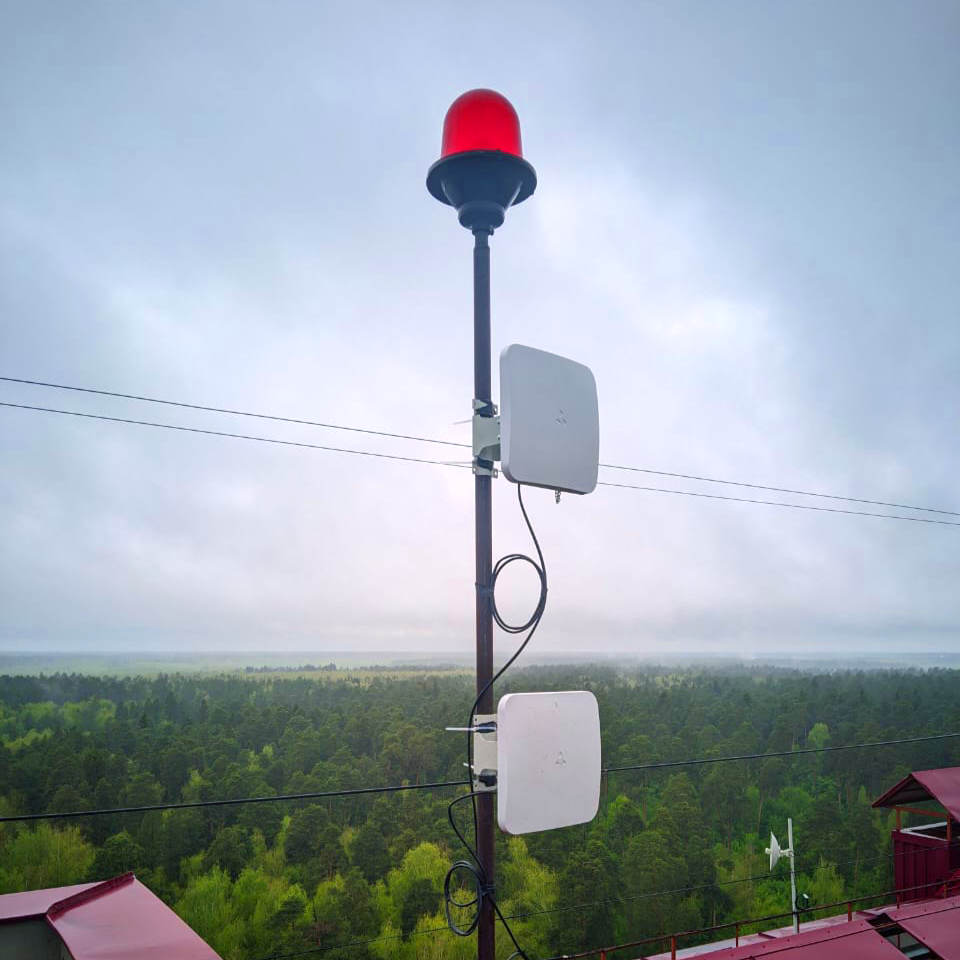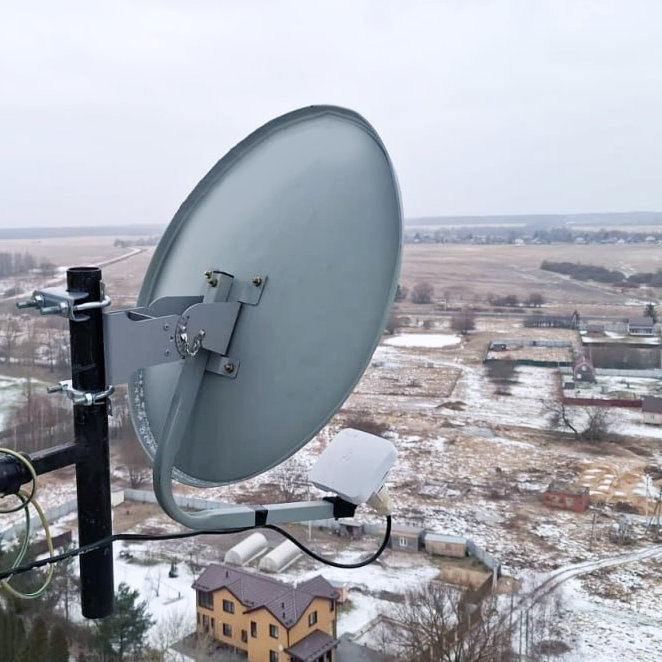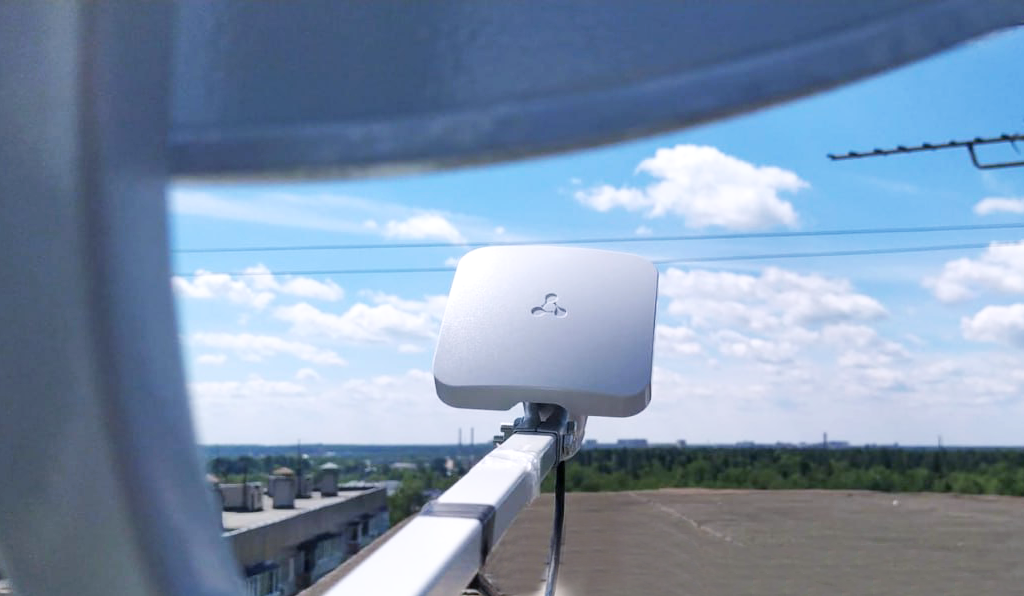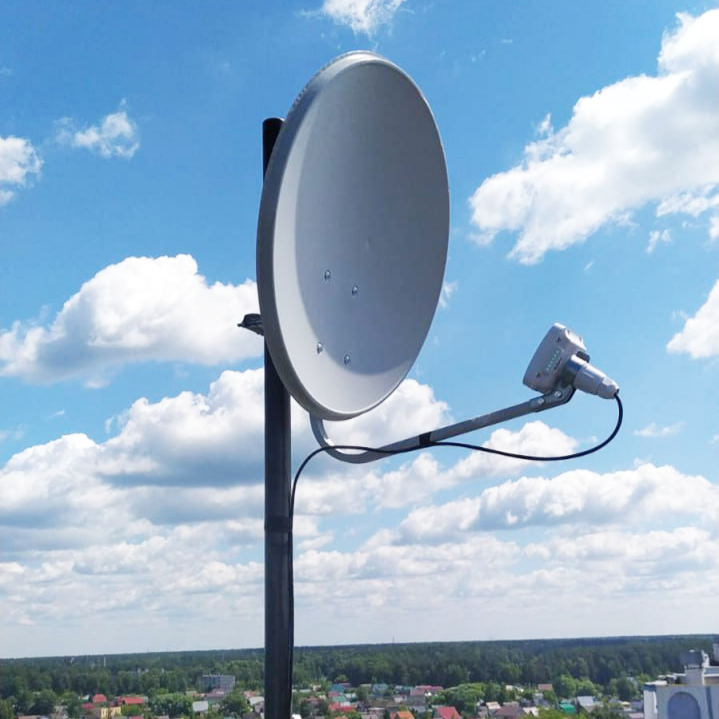Building bridges: the evolution of Eltex broadband wireless access solutions


The evolution of Eltex broadband wireless access solutions
Deep in the taiga, where heavy machinery rumbles through quarries, workers keep in touch with their families via the internet. In a remote village, people stream videos and communicate with the world via video calls. This kind of connectivity is made possible by broadband wireless access (BWA) technologies.
BWA is a broad concept that can be based on LTE and 5G cellular standards, satellite internet, WiMAX, or Wi-Fi. Among these, Wi-Fi remains the most accessible and adaptable technology for such use cases.
This article explores Eltex Wi-Fi-based BWA product line. We look at how it has progressed in response to emerging technology trends and how we have integrated our experience into the development of new products.
To begin, let’s take a look at the key trends shaping the Wi-Fi segment of the BWA market.
The development of the Wi-Fi-based BWA market
Wi-Fi-based broadband wireless access is a story of how a technology originally designed for local convenience evolved to meet a wide range of complex connectivity needs.
Two key milestones in the development of BWA were the adoption of IEEE 802.11n (Wi-Fi 4) in 2009 and IEEE 802.11ac (Wi-Fi 5) in 2013. These standards introduced MIMO (Multiple Input Multiple Output), packet aggregation, and more efficient modulation techniques. As a result, devices based on these standards offered not only higher data rates but also improved connection stability and extended range.
Standard Wi-Fi equipment was not suitable for BWA use cases.
First, it was designed for short-range operation. In contrast, broadband wireless access requires coverage over distances measured in kilometers.
Second, typical Wi-Fi devices are limited in transmitter power, usually up to 100 mW in most countries. This level is insufficient to overcome long distances and physical obstacles.
Third, such devices often use omnidirectional antennas that scatter the signal in all directions. This approach is inefficient for point-to-point connections with remote clients.
Finally, most consumer-grade equipment was not intended for continuous outdoor operation. It could not withstand temperature fluctuations, precipitation, or other environmental factors.
This created a demand for purpose-built equipment, which eventually became available. At the same time, the global market for Wi-Fi-based BWA began to segment into several user groups. The two largest of these were telecom operators and enterprise customers.
Telecom operators
In the operator segment, Wi-Fi-based BWA is viewed as a cost-effective way to expand coverage and help bridge the digital divide, particularly in regions with low population density. Moreover, the lack of reliable internet is not just a problem in developing or underdeveloped countries: “Today there are over 2.9 billion users across the world in rural areas who do not yet have access to the Internet for their day-to-day needs. Considering the cost of deploying cellular services, <…> the rural Wi-Fi deployment is considered as the primary and well-suited solution to address the rural digital connectivity issues.”
Smaller local operators, known as WISPs (Wireless Internet Service Providers), stood out in particular. These providers began to emerge rapidly around the world in the early 2000s. They saw an opportunity in Wi-Fi to offer internet access in areas where major telecom companies were unwilling to connect users, often for economic reasons. In rural parts of the United States, mountain villages in Europe, and fast-growing suburbs across Asia, Wi-Fi-based access became the only window into the digital world for millions of people.
Enterprise customers
At the same time, the enterprise segment was also evolving. Enterprise customers recognized that wireless connectivity was an ideal way to link remote sites without the need to lay kilometers of cable.
Wi-Fi is viewed by enterprise customers as either a primary or backup solution for connecting remote facilities to the network infrastructure. For example, oil and gas companies use BWA to maintain communication with extraction and processing sites, while logistics businesses rely on it to connect remote warehouses and similar locations.
General trends
According to the Business Research Insights analytics agency, the market for BWA bridges alone is growing steadily at a rate of 13% per year. A significant share of this growth comes from Wi-Fi solutions operating in the 5 and 6 GHz frequency bands.
Researchers identify several key drivers behind this trend:
- Cost efficiency. Wi-Fi-based BWA networks are significantly more affordable to deploy than wired infrastructure.
- Deployment speed. While laying cable can take months, a wireless solution can be launched in a single day.
- Wi-Fi allows networks to be scaled quickly, topologies to be modified, and infrastructure to be adapted to changing needs.
The main technological challenges in the BWA market relate to interference and spectrum efficiency. The unlicensed 2.4 GHz and 5 GHz bands are becoming increasingly congested, which is prompting a gradual transition to the 6 GHz band. The reason is simple: less interference, more available spectrum, and higher throughput.
The global Wi-Fi-based BWA market includes both major international vendors and regional manufacturers. The latter offer competitive solutions, putting pressure on established market players.
Between global experience and local needs
The Russian BWA market has developed under unique conditions shaped by geographic features, regulatory constraints, and strategic government initiatives. The country’s vast territory and uneven population distribution created conditions for adopting wireless technologies as an alternative to traditional wired infrastructure.
Government programs aimed at bridging the digital divide have become a major driver of BWA development.
- The national program “Digital Economy of the Russian Federation” set an ambitious goal to provide broadband internet access to 97% of households by 2030.
- The “Information Infrastructure” project provides funding for communication networks in settlements with populations ranging from 100 to 500 people.
- The federal program “Bridging the Digital Divide” includes plans to bring broadband internet to 13,000 localities.
In most cases, wireless technologies, including Wi-Fi-based BWA, are the optimal solution.
The enterprise sector demonstrates an equally strong demand for BWA solutions. The structure of the Russian economy, with its large share of extractive and processing industries, creates specific connectivity challenges for remote infrastructure in harsh climates and across long distances.
The regulatory environment for such projects also has distinct features that significantly affect the development of local Wi-Fi technologies. The State Radio Frequency Commission (SRFC) defines the rules for spectrum usage, including equipment registration and the issuance of licenses for frequency use and transmission power.
Our work on developing BWA equipment began in 2015. The early phase was challenging. We faced technical difficulties and at times had to completely rethink our development approach.
Three generations of Eltex broadband wireless access solutions
First generation: first steps
Before developing BWA solutions, Eltex had already gained some experience in developing Wi-Fi devices. The first series of WEP and WOP access points had been released. Our work on BWA solutions began at a time of growing customer interest in such technologies.
The first-generation BWA product line included the WOP-12ac-LR base station and the WB-1P-LR user station, both operating on the Wi-Fi 5 standard. These devices reflected the typical approach and challenges faced during early development stages. We’ll cover these challenges shortly, but first, let’s look at the key features.
The WOP-12ac-LR base station offered strong performance for its time: coverage of up to 3 km when paired with the user station, three independent 2×2 MIMO radio modules, and a high-power transmitter of up to 27 dBm. Data rates of up to 867 Mbps were considered fast for the mid-2010s.
The base station supported WDS for point-to-point (PTP) links, enabling long-range connections of up to 8 km when using parabolic antennas.
The WB-1P-LR user stations were equipped with a 2.4 GHz Wi-Fi module used for service purposes. This feature allowed specialists to perform alignment and configuration over the air using a smartphone. At the same time, the first-generation devices faced a number of challenges.
A major challenge was operating within the frequency spectrum regulated by the SRFC. The issue lay in the chipsets of that time and the standard Wi-Fi architecture. Devices used fixed channel widths of 20, 40, or 80 MHz. Even when extended modes (e.g., 10 MHz) were enabled, the frequency step remained too large.
Additionally, the 802.11ac standard allowed for different center frequencies to be used for management/control traffic and user data traffic in certain channel width modes (40/80 MHz). This made regulatory coordination with the SRFC more difficult.
The chipsets available at the time did not support setting custom frequency values with the necessary frequency step required by local licensing rules. The 802.11 standard’s fixed frequency step of 20 MHz limited the flexibility needed for operating in the licensed bands.
An analysis of the first-generation devices showed that a purely technocratic approach was insufficient for successful BWA development. It became clear that more attention needed to be paid to the regulatory environment, specific customer needs, and the technical limitations imposed by operating conditions in Russia.
We concluded the development of the first-generation lineup in favor of a completely new approach. The lessons learned during this phase became a valuable foundation for solving the identified issues and creating a significantly more capable next generation of solutions.
Second generation: maturity
In 2017, we launched the second generation of broadband wireless access devices. The product line included base stations WOP-2ac-LR2, WOP-2ac-LR5, WOP-2ac-LR5 SYNC, WOP-2ac-LR2 SYNC, and user stations WB-2P-LR2 and WB-2P-LR5.
All the issues identified in the first generation had been fully resolved. One of the key improvements was the introduction of a 5 MHz channel step, which enabled flexible frequency tuning in line with the channels licensed by the SRFC.
A fundamental enhancement was the transmission of both management and user traffic on the same frequency. This eliminated conflicts with spectrum regulations and, at the time, was rarely found in competing solutions.
The number of supported WDS links was increased to eight, enabling the creation of more complex topologies, with not only base stations but also user stations functioning as repeaters.
New base and user station models supporting the 2.4 GHz band were introduced: WOP-2ac-LR2, WOP-2ac-LR2 SYNC, and WB-2P-LR2. These models were especially relevant for customers who preferred to operate without purchasing frequency licenses. Devices operating in the unlicensed band only required registration with the SRFC, significantly simplifying their deployment.
Fixed modulation opened up new capabilities for operation in challenging radio conditions. For example, forcing the use of low-order modulations ensured stable communication in long-distance scenarios with poor propagation, adverse weather conditions, or high interference. This generation also introduced the Maximum Rate feature, which allows setting an upper limit for modulation and using all lower-level modulation rates.
A key innovation of the second generation was the SYNC product line, which introduced a new approach to building broadband wireless access base stations. The concept of using multiple base stations (up to four) operating on the same frequency made it possible to create efficient circular coverage across large areas. Each sector could support up to 30 user stations, enabling high connection density.
Further development in this area led to the implementation of Polling technology, which addressed the issue of collisions in BWA networks with sector antennas. Unlike conventional Wi-Fi networks, where all clients are within mutual coverage, BWA clients connected to different sectors may fall outside each other’s transmission range. As a result, simultaneous transmissions from such clients could cause collisions. Polling solved this problem by providing coordinated access to the transmission medium.
Our research into the hardware capabilities of second-generation devices, along with continued software development, led to an expansion of the supported frequency range from the initial upper limit of 5835 MHz to 6160 MHz (up to channel 230). While there were attempts to reach 6425 MHz, it was ultimately decided not to do so within the Wi-Fi 5 platform. Many of the findings from this generation laid the foundation for the development of the next one.
Third generation: a new paradigm of versatility and Wi-Fi 6
The second generation of devices focused on flexibility and adaptation. In contrast, the third generation, introduced in 2024, reflects a complete rethinking of the architecture of our BWA solutions.
One of the key developments was the transition to the 802.11ax standard, including Wi-Fi 6 and Wi-Fi 6E. New devices now support 160 MHz channels, 1024-QAM modulation, enhanced MU-MIMO, and the 6 GHz frequency band. These advancements have expanded the possibilities for network planning and use of licensed spectrum.
We also introduced a new class of high-performance devices in the form of wireless bridges. The WB-3P-PTP2, WB-3P-PTP5, and WB-3P-PTP6 models support operation in the 2.4 GHz, 5 GHz, and 6 GHz bands, respectively. The 6 GHz model became our first BWA product with full support for the entire frequency range permitted in Russia, up to 6425 MHz. These devices can be used with a built-in sector antenna for distances of up to 3 kilometers or with an external offset parabolic antenna, providing a stable connection over distances of up to 34 kilometers. New base and user stations of the third generation are also in development, including the WOP-3ax-LR5, WOP-3ax-LR6, WB-3P-LR5, and WB-3P-LR6 models. Their commercial release will be announced at a later date.
Another important step was reconsidering whether a strict classification of devices by role is necessary. This led to the core concept of the third generation, which is versatility. In the upcoming firmware versions 2.3.0 and 2.3.1, the new devices will support three modes of operation: PTP access point, PMP (Point-to-Multipoint) access point, and client mode.
This approach enables a wide range of deployment scenarios, with device selection based on the specifics of each task and the required connection distance. For example, a PTP link can be created between two base stations or between user stations if the distance is relatively short. Wireless bridges can also be used as clients in PMP configurations.
New proprietary protocol
At the core of the third-generation broadband wireless access solutions lies a proprietary Time Division Duplex (TDD) protocol for managing bidirectional data transmission. It replaces the Polling mechanism used in the previous generation of devices. Unlike Polling, where frame duration may vary, TDD operates with fixed 10-millisecond frames. Each frame is divided into two slots: one for downlink (DL) and the other for uplink (UL), with a 50/50 ratio. Frames alternate every 10 ms.
In PTP mode, this approach ensures guaranteed simultaneous transmission and reception. In PMP scenarios, the base station transmits to clients for 50% of the time and receives data for the remaining 50%.
TDD support will become available starting with version 2.3.0. Future software updates are expected to reduce the frame duration to 5 ms, add the ability to adjust the DL/UL slot ratio, and introduce an automatic mode that dynamically sets the ratio based on traffic volume. For example, IP cameras require more uplink bandwidth. These enhancements will allow for fine-tuned configuration based on specific use case needs.
New test site
Developing broadband wireless access equipment involves more than software and circuitry. It requires countless hours of field testing under real-world conditions. To support this, a dedicated test site was established in Moscow Region.
The location was chosen deliberately. It is far enough from Moscow to avoid major interference from urban infrastructure, yet close enough for engineers to work efficiently. The terrain enables testing both in line-of-sight conditions and in scenarios with obstacles.
The test site includes several fixed locations spaced up to 34 kilometers apart. Towers of various heights are used to simulate different deployment scenarios. This enables climate testing and other long-term trials aimed at identifying rare or hard-to-reproduce issues.
We have shown that broadband wireless access equipment plays a key role in bridging the digital divide and supporting business digitalization not only in Russia, but around the world. Our goal is to remain at the forefront of developing such solutions, relying on advanced technologies and our developments.
The future of Russian wireless solutions is being shaped here and now by Russian engineers, with a deep understanding of local requirements and a focus on global best practices. The path is not without challenges, but they exist to be overcome — and the history of Eltex broadband wireless access equipment is proof of that.
Mentioned products
- Wi-Fi 6:
- 802.11ax
- MU-MIMO:
- 2×2
- Frequency range:
- 2400–2483.5 MHz
- Transmitter power:
- 26 dBm
- Wi-Fi 6:
- 802.11ax
- MU-MIMO:
- 2x2
- Frequency range:
- 5150–5975 MHz
- Power of the transmitter:
- up to 27 dBm
- Wi-Fi 6:
- 802.11ax
- MU-MIMO:
- 2x2
- Frequency range:
- 5935–6425 MHz
- Power of the transmitter:
- up to 26 dBm







